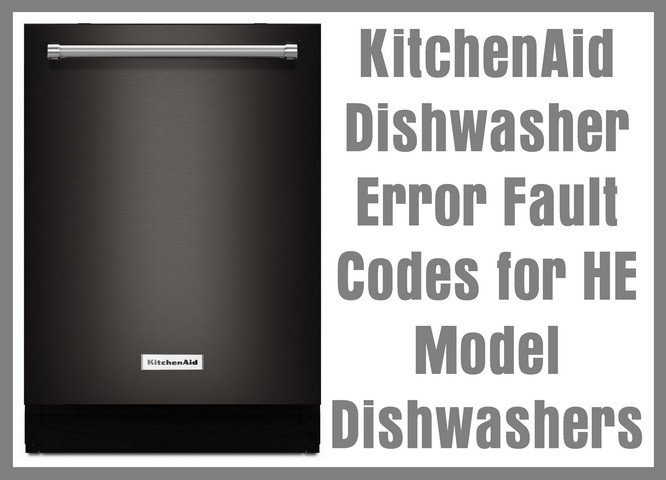
Here’s the deal: the error code SE on your KitchenAid dishwasher is a signal that something’s not quite right. It’s like your dishwasher waving a tiny red flag, indicating that there might be a sensor issue, more specifically, a problem with the “sensor error” – hence, SE. Just like our bodies give us signs when we’re about to catch a cold, our appliances often do the same when something inside isn’t working as it should. Now, the burning question: is it safe to continue using your dishwasher with this error code flashing like a pesky reminder of your to-do list?
Understanding the Error Code SE: What Does It Mean?
If you’ve noticed the SE error code, you’re not alone. It’s a common hiccup that many KitchenAid users encounter. The SE stands for a sensor error, which suggests that a part of your dishwasher, typically the sensor responsible for detecting things like water level or temperature, might not be performing its job effectively. Imagine trying to bake a cake without being able to check the oven’s temperature—tricky, right? That’s what your dishwasher faces if the sensors aren’t reading levels or temperatures correctly.
The sensor is like the dishwasher’s nervous system, sending messages to ensure everything operates smoothly. When this nervous system doesn’t communicate properly, your dishwasher might not complete its cycle or could cause issues, such as dishes that aren’t fully clean. It doesn’t mean your dishwasher is going to stop working altogether, but these sensors help optimize its functionality. Without them working correctly, efficiency could take a hit.
Sensors can malfunction due to various reasons: a build-up of grime or minerals can cause them to misread, or it might be a more mechanical issue, such as a loose wire. It’s important to understand this isn’t typically something that will cause immediate harm but ignoring it might lead to more significant issues down the line. If addressed promptly, you can often fix these problems without a big fuss.
The Safety Aspect: Should You Keep Using It?
Now, let’s get to the meat of the matter—safety. Should you keep running your dishwasher if it’s displaying the SE error code? In most cases, it’s not an immediate hazard. Your KitchenAid appliance isn’t going to burst into flames, but it’s not functioning optimally either. Think of it like driving your car with a warning light on—it might get you to the grocery store, but you wouldn’t want to ignore it for too long.
The potential risks associated with continuing to use a malfunctioning dishwasher revolve around inefficient cleaning and the chance of worsening the problem. If the sensor is not reading correctly, the dishwasher may not rinse dishes thoroughly or use the required water temperature, which could be problematic over time, especially in removing stubborn stains or bacteria. Also, prolonged use without addressing the issue could lead to more significant, costly repairs.
If you decide to use the dishwasher despite the error code, make sure to monitor it closely. Note any changes in performance—like louder than usual noises, incomplete cycles, or water not draining properly. Consider this a temporary solution, like applying a bandage to a cut until you can get it properly checked.
Next Steps: What Can You Do?
So, what should you do next? First, check your dishwasher’s manual. It often contains troubleshooting tips specific to your model. If the problem seems minor, you might be able to reset the appliance. Think of this like rebooting your computer when it decides to act up.
If you’re comfortable with a bit of DIY, inspect and clean the sensor. Mineral deposits or food residue can often be the culprits. Gently cleaning these might solve the error, much like clearing your throat when your voice sounds scratchy. However, if you’re not a fan of fiddling with appliance parts, it’s best to call in the professionals.
Getting in touch with a qualified technician is always a smart move if simple troubleshooting doesn’t work. They can assess the situation more accurately, ensuring everything from wires to water levels is as they should be. In the long run, addressing the SE error promptly could save you from more extensive repairs or replacements.
Prevention: How To Avoid Future Errors
Wouldn’t it be great if you could prevent these pesky error codes from appearing in the first place? While there’s no magic wand, regular maintenance is pretty close. Just as with your car or computer, routine check-ups and care can extend the life and efficiency of your dishwasher.
Start with regular cleaning. Keep the interior, especially the door and seals, free from food particles and soap residue. This is similar to keeping dust out of your laptop fan—preventative care that maintains performance. Running an empty cycle with vinegar can help clear out any soap or mineral build-up.
Also, consider using water softener if you live in an area with hard water. Hard water can be the enemy of appliances, leading to mineral deposits that interfere with the sensors. A water softener acts like a moisturizer for your dishwasher, preventing these build-ups from forming.
In the end, while dealing with an error code like SE can be annoying, understanding what it means and knowing how to respond can make all the difference. Treat your dishwasher well, address issues as they arise, and it will continue to be your kitchen’s MVP, saving you time and elbow grease.